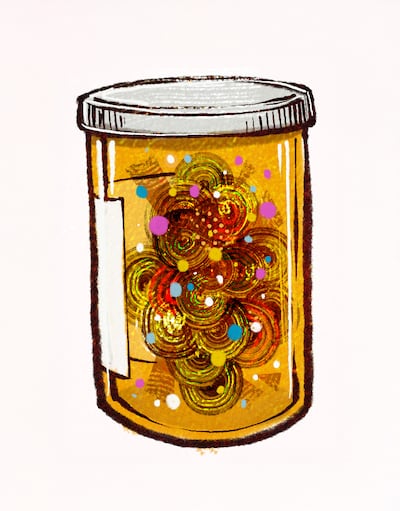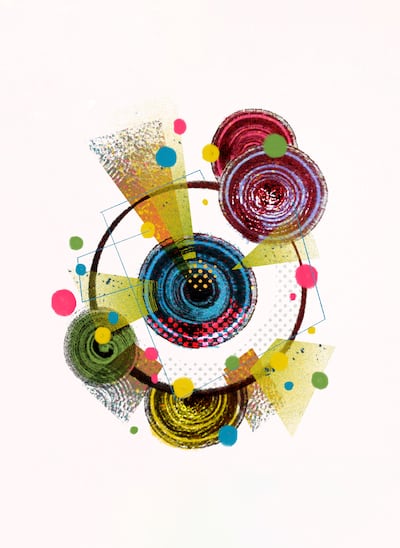Once, “hyperactive” kids were dismissed as problem children. The advent of attention-deficit hyperactivity/disorder, or ADHD, offered an alternative explanation for behavioral issues and symptoms like difficulty focusing and sitting still, racing thoughts and overlapping internal dialogue. It also offered a solution in the form of a pill. Decades later, ADHD is a burgeoning neurological diagnosis among children and adults alike, often celebrated as a more dynamic way of interfacing with the world. But in fact, we’re less sure now about what it is, how it works, what causes it and how to diagnose it. Here’s the breakdown.
1775
In his book, “The Philosophical Doctor,” German physician Melchior Adam Weikard cited inattentiveness and distractibility as symptoms of mental disorder, blaming “fibers” weakened by the patient’s upbringing. He suggested treatments like cold mineral baths, gymnastic exercise and being left alone in a dark room. In 1798, Scottish physician Sir Alexander Crichton described a similar condition arising from an “unnatural sensibility of the nerves,” which patients called “the fidgets.” Curiously, each later became a personal physician to a Russian czar.
6 symptoms x 6 months
Children under 16 can be diagnosed with ADHD if they exhibit six related symptoms — like squirming, interrupting, getting distracted or forgetting homework — for six months or more. Five symptoms is enough for adults, per the Diagnostic and Statistical Manual of Mental Disorders, the American Psychiatric Association’s encyclopedic reference used by providers, insurers, pharmaceutical companies and the courts. The DSM first covered “hyperkinetic reaction of childhood” in 1968; “Attention-Deficit Disorder” in 1980; ADHD in 1987; and adult ADHD in 1994.

1 in 4 teenage boys
By age 17, 23 percent of boys have been diagnosed with ADHD, per the Centers for Disease Control and Prevention, along with 15 percent of all adolescents. Seven million children have been diagnosed – more than 1 in 10. There are also 15.5 million adult cases of ADHD; 40 percent of men were identified as adults, compared to a whopping 61 percent of women, whose symptoms are less likely to be visible.
“Normally, when a diagnosis booms like this it’s because of some novel scientific breakthrough — a newly discovered treatment or a fresh understanding of what causes the underlying symptoms … (But) in many ways, we now understand ADHD less well than we thought we did a couple of decades ago.” — Paul Tough, New York Times Magazine

Double the drugs
Prescriptions for stimulants used to treat ADHD, like Adderall and Ritalin, rose 58 percent nationwide from 2012 to 2022. Fueled by amphetamine and methylphenidate, respectively, these meds have been shown to improve classroom behavior — for a time — but don’t boost academic performance. These drugs are also highly addictive, admittedly abused by up to a quarter of middle and high school students, according to an expansive study released in 2023.
52% misinformation
That’s what Canadian researchers found in a 2022 study of posts about ADHD on TikTok. Another 27 percent were anecdotal, based on personal experience. Just one-fifth of posts offered useful information. These numbers echoed similar studies on other health care topics across social media platforms, like Reddit or YouTube. One in 4 American adults suspect they have ADHD but have not been diagnosed.

Zero biomarkers
Scientists have found no concrete measure of ADHD — no brain anomaly on an MRI, no gene sequences — though it’s often described as “genetic” and is nine times likelier to recur among siblings. Symptoms overlap with anxiety, PTSD or autism — ergo the modern grouping “neurodivergence.” But environment is a factor, and just 1 in 9 kids diagnosed with ADHD experience symptoms throughout childhood. Per The New York Times, this seems to indicate environmental causes, rather than a brain deficiency.
$122.8 billion
Between lost productivity, unemployment, doctor’s visits and medications, the disorder is estimated to cost Americans $14,092 per adult each year, as of 2021. That’s more than the average cost of in-state tuition for a four-year university. The market for ADHD medications was assessed at $15.2 billion in 2024 and is expected to balloon to as much as $24.1 billion by 2033.
This story appears in the September 2025 issue of DeseretMagazine. Learn more about how to subscribe.


